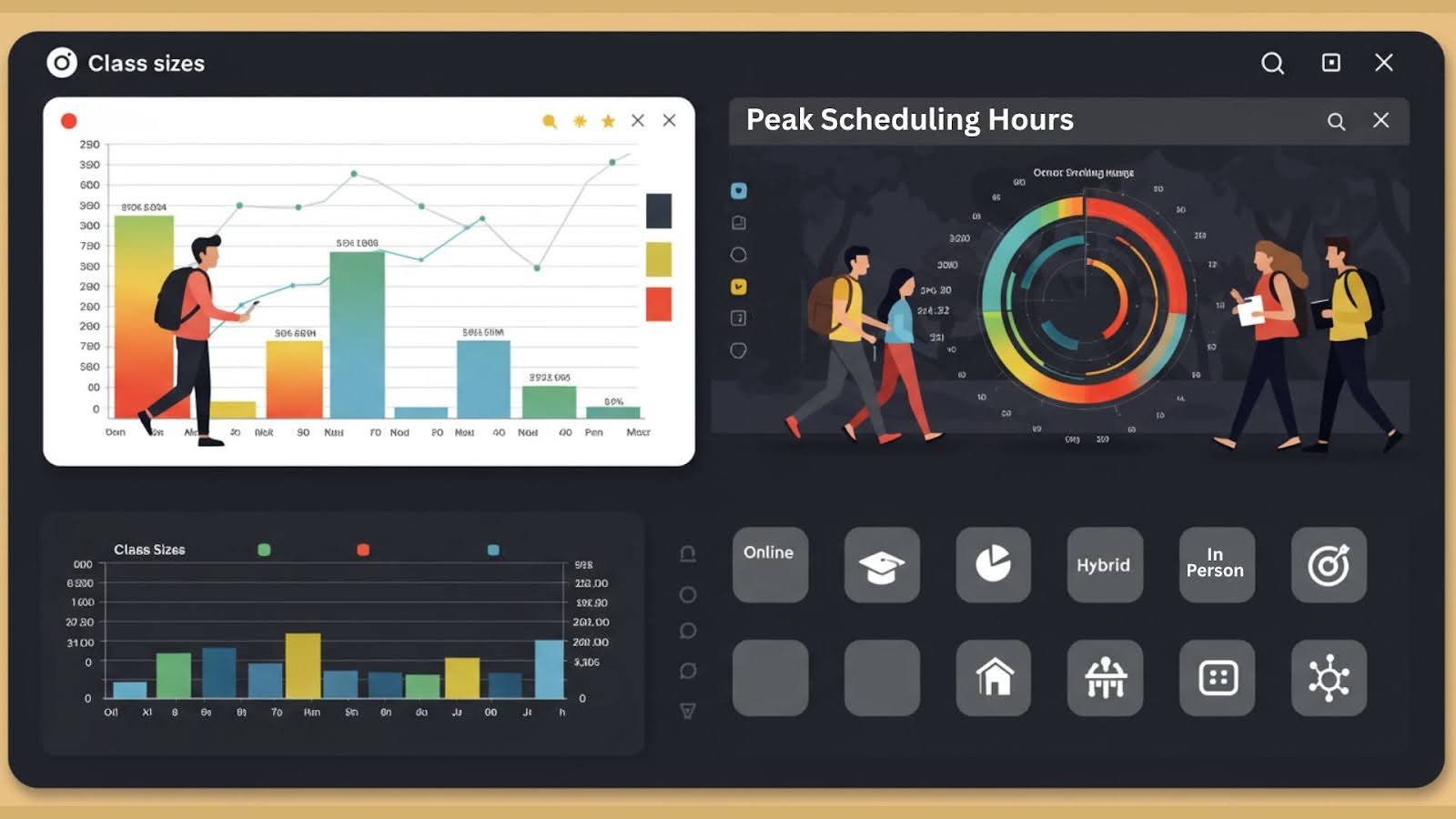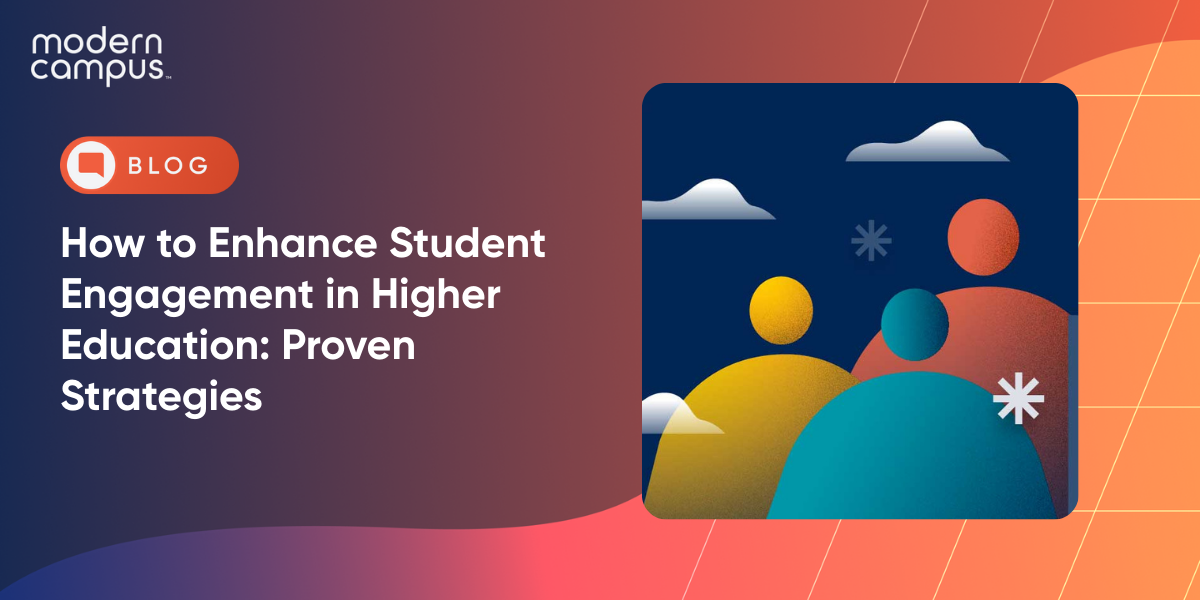How to Solve Common Course Scheduling Challenges in Higher Ed
In higher education, course scheduling is a strategic lever that directly affects student satisfaction, academic performance and institutional efficiency. Yet for many colleges and universities, outdated scheduling practices continue to cause ripple effects across departments, from overbooked classrooms and underutilized instructors to frustrated students unable to register for the courses they need.
This challenge has only intensified as institutions adapt to changing learner expectations, hybrid delivery models and workforce demands. To meet these complexities head-on, more institutions are turning to course scheduling software for universities, solutions purpose-built to optimize class planning and support student success.
Forward-thinking institutions are leveraging data and technology to improve administrative workflows and enhance student success. Adopting the right solutions can help universities and colleges modernize their scheduling systems. Modern academic scheduling software uses real-time data, demand forecasting and integration across systems to ensure students get into the right courses at the right times, while administrators can efficiently allocate faculty and facilities.
This blog explores the most common scheduling challenges, demonstrates how academic course scheduling software can resolve them and shares optimization strategies that support balanced student workloads and improved retention.
Why Institutions Are Turning to Course Scheduling Software for Universities
Institutions are under pressure to deliver flexible, efficient and student-centered scheduling experiences. Traditional spreadsheet-based scheduling or siloed software tools can’t keep pace with operational demands or learner expectations. As the needs of modern students diversify, so too must the systems that serve them. Course scheduling software for universities provides the tools to automate and optimize scheduling workflows, ensuring better alignment between student needs, faculty resources and institutional goals.
Purpose-built scheduling platforms drive institutional agility. Whether adjusting to last-minute enrollment changes or managing hybrid delivery models, modern solutions help administrators make fast, data-informed decisions that benefit students and staff. Here’s why institutions are investing in academic scheduling transformation.
Managing Growing Complexity in Academic Scheduling
Academic scheduling involves far more variables than it did even a decade ago. From balancing hybrid and in-person course offerings to accounting for faculty availability, room constraints and equitable access, the planning process has become increasingly multifaceted. Institutions must also accommodate diverse learner profiles, including full-time, part-time, working adults and students across different time zones. Without centralized academic course scheduling software, it becomes nearly impossible to effectively coordinate these elements.
Modern platforms centralize all these data points in one interface, allowing institutions to run simulations, identify conflicts and test different scheduling scenarios before locking in a term. This level of visibility helps academic leaders design schedules that reflect actual student behavior and demand, not just assumptions or historical patterns.
From Manual Chaos to Streamlined Coordination
Relying on spreadsheets or outdated legacy systems to build term schedules often leads to human error, duplicated efforts and miscommunication across departments. These inefficiencies can delay registration, reduce course availability and frustrate both students and staff. Moreover, the lack of integration with catalog, curriculum and SIS platforms creates a fragmented experience that’s difficult to manage and scale.
Academic scheduling software replaces this chaos with coordinated workflows. Through role-based permissions and approval paths, different teams can collaborate in real time while maintaining data integrity. Automation handles routine tasks like conflict detection and room assignment, freeing staff to focus on strategic planning and student support.
Common Scheduling Challenges That Undermine Student Success
Despite their best efforts, many institutions still grapple with recurring issues in academic scheduling. These challenges have real consequences for student retention, equity and time to graduation. Identifying and addressing these pain points is the first step in building a more resilient and student-friendly scheduling strategy.

Overloaded or Underfilled Classes
One of the most persistent problems in academic scheduling is the uneven distribution of students across course sections. Some classes fill up within hours, leaving waitlisted students in limbo, while others run half-full, straining institutional resources. This imbalance can force students to delay graduation or settle for less-than-ideal alternatives that don’t fit their schedules.
Academic course scheduling software forecasts demand and monitors real-time registration data. With early alerts and predictive tools, institutions can adjust section counts or redistribute students before problems arise, ensuring better load balancing and efficient use of faculty and space.
Conflicts That Delay Graduation Timelines
When core courses required for graduation overlap or are offered at inaccessible times, students may be forced to delay their academic progress. This conflict disproportionately affects underrepresented, working or commuter students who often have more rigid scheduling needs.
By mapping degree pathways against the academic calendar, institutions can use scheduling software to ensure key courses are offered in non-conflicting time blocks. Some tools also incorporate student-specific constraints, allowing for more personalized and equitable scheduling decisions that keep learners on track.
Misalignment Between Student Demand and Course Supply
Offering the right courses at the wrong time can be just as problematic as not offering them at all. Without a clear view of student demand or historical enrollment patterns, academic departments often struggle to forecast which courses to offer, when and how often.
Data-powered academic scheduling software enables departments to analyze trends, survey intent and respond quickly to shifting demand. Administrators can better align course availability with actual student needs, boosting enrollment efficiency and satisfaction.
Academic Scheduling Software Features That Make a Difference
Course scheduling software for universities is not one-size-fits-all. The most impactful platforms offer a suite of intelligent features that work in harmony with existing systems and institutional processes. Here’s what to look for when assessing solutions.
Real-Time Visibility and Smart Room Allocation
Room usage inefficiencies are a silent drain on academic resources. Academic scheduling software offers real-time visibility into space utilization, enabling better planning and reducing last-minute scrambling. Smart assignment features match class size with room capacity while accounting for accessibility and tech requirements.
You can maximize campus infrastructure and improve student experiences by ensuring classes are held in suitable, consistent spaces.
Integration with Curriculum and Catalog Systems
Disconnected systems slow down academic planning and increase the risk of publishing errors. When scheduling software integrates seamlessly with curriculum and catalog tools, it becomes easier to reflect accurate information across all touchpoints, from course listings to advising tools.
This interconnectedness ensures that students, advisors and faculty all work from the same data, minimizing confusion and simplifying the registration process.
Automation for Faculty, Admins and Students
Automation is the cornerstone of efficient scheduling. From sending approval workflows to assigning rooms or tracking time blocks, scheduling software removes tedious manual tasks that consume staff time and lead to burnout.
By reducing these burdens, institutions empower their teams to focus on strategic planning, student advising or program innovation.
How to Use Academic Course Scheduling Software to Balance Student Load
Load balancing is an equity issue. When institutions use academic course scheduling software to evenly distribute students, they enhance access, satisfaction and success across diverse learner populations.

Data-Driven Demand Forecasting
Historical enrollment data, student surveys and registration trends offer a treasure trove of insights. The best scheduling tools transform these inputs into actionable forecasts, predicting where bottlenecks or under-enrollments might occur.
By modeling future terms based on these insights, institutions can proactively open or consolidate sections, allocate faculty strategically and maintain optimal enrollment levels across departments.
Flexible Time Blocks and Optimized Seat Allocation
Rigid time blocks are a relic of the past. Modern scheduling platforms allow institutions to build flexible course grids that reflect student preferences and institutional capacity. This adaptability is especially important for students with jobs, caregiving responsibilities or commute barriers.
Smart seat allocation tools also help optimize capacity within each section. Rather than assigning students based on a first-come, first-served basis, these systems consider overall load, schedule compatibility and academic priority.
Equitable Distribution Across Modalities and Departments
Offering a balance of in-person, hybrid and online sections encompasses inclusion. Course scheduling software for universities supports equitable access by helping institutions distribute courses across modalities and departments based on student demographics and needs.
This approach prevents overserving some students while underserving others and allows departments to better align teaching assignments and modality expertise.
Use Cases: Real-World Applications in Academic Course Scheduling Software
Institutions across North America are already seeing the value of scheduling software through innovative and practical use cases. These examples showcase how technology can solve long-standing problems while improving student and faculty satisfaction.
Aligning Hybrid and In-Person Offerings With Student Preferences
Over the past few years, students have grown accustomed to flexibility. Many expect a mix of in-person and remote options. With scheduling software, institutions can easily track modality preferences and adjust offerings accordingly without overextending faculty or straining physical spaces.
This responsiveness improves student satisfaction and enrollment, especially among non-traditional learners who value flexibility.
Preventing Bottlenecks in Required Courses
Some programs have “gatekeeper” courses that students must pass to progress. If these aren’t scheduled frequently or at optimal times, they become bottlenecks that delay graduation for entire cohorts.
Smart scheduling tools flag these risks in advance and allow administrators to coordinate across departments to ensure consistent availability of high-demand, high-impact courses.
Supporting Non-Traditional Learners With Asynchronous Flexibility
Not all students follow the traditional Monday-to-Friday, 9-to-5 model. Scheduling platforms can help institutions create asynchronous or weekend offerings that meet the needs of working professionals, parents and adult learners.
Flexibility opens up access to education for broader audiences while ensuring programs remain competitive and relevant.
Optimization Strategies for Maximum Impact
Even the best software needs the right strategies to deliver value. Institutions that extract the most from their scheduling platforms take a data-informed, cross-functional and student-centric approach.

Leverage Predictive Analytics to Anticipate Shifts in Enrollment
Trends like declining demographics and economic shifts affect course demand. Predictive analytics tools within scheduling platforms can help forecast enrollment dips or spikes, enabling institutions to plan ahead and protect revenue.
These insights are invaluable for making strategic decisions about course offerings, faculty hiring and resource allocation.
Foster Cross-Departmental Collaboration to Improve Scheduling Accuracy
Scheduling isn’t just a registrar’s responsibility. When academic affairs, advising and IT teams collaborate using shared tools, institutions build schedules that are accurate, aligned and student ready. Platforms with collaborative dashboards and role-based access make it easier for all stakeholders to weigh in and contribute to a smooth scheduling cycle.
Use Scheduling Software to Support Guided Pathways and Career Goals
Learners expect to understand the link between their coursework and future career aspirations. The most forward-thinking institutions use scheduling tools to manage logistics and reinforce student success initiatives. By aligning course availability with guided pathways, career goals and credential milestones, institutions create an environment where students are more likely to persist and graduate on time.
This strategic use of academic course scheduling software can be a game changer for institutions looking to boost retention and outcomes.
It’s Time to Modernize Your Scheduling Approach
Outdated scheduling practices are no longer sustainable in higher education. The stakes are too high both for student success and institutional stability. By embracing modern academic scheduling software, institutions can solve persistent pain points and lay the groundwork for a more agile, efficient and student-centered future.
At Modern Campus, we understand the complexities of academic operations and the evolving needs of learners. Our solutions are designed exclusively for higher education, with powerful tools for schedule optimization, load balancing, cross-department collaboration and student engagement. We're here to help you replace guesswork with data-driven precision and deliver the scheduling experience your students expect. Connect with us to explore how we can support your team in building a smarter, more responsive course scheduling strategy.
Last updated: May 8, 2025



